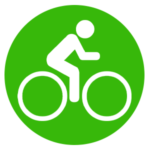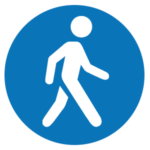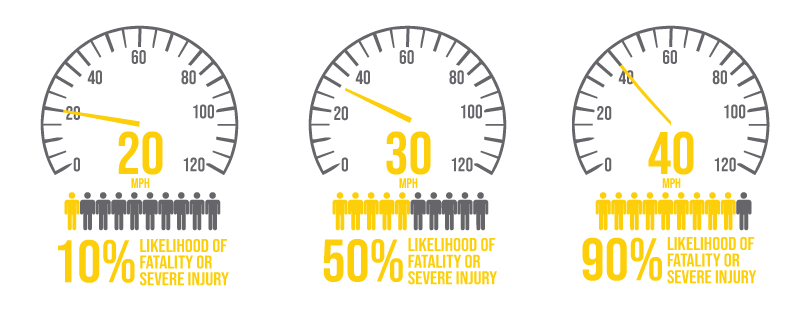Your Role
Whether you are walking, biking or driving to get around, the Vision Zero Resource Center has tips to make your trip safer. With new information and research on traffic safety being published all the time, the Vision Zero Team wants you to have the knowledge and power to make each day as safe as possible.
Please share this information with friends, family, and coworkers. By creating a network of Truckee Meadows residents who are all engaged and educated on street safety, and who prioritize sharing the street, we can reach our vision of zero serious injuries and fatalities on our roadways.
Crashes are preventable and it takes all of us to make our streets safer. Together, we can make a difference.

When Driving
- Pause and Wait Before You Turn
Turn slowly and expect people in the crosswalk every time. Left turns severely injure three times as many pedestrians as right turns—after you find a break in oncoming traffic, there is still likely to be someone in the crosswalk. - Slow It Down - Speed Limits are Changing
If you hit someone at 30 miles per hour, you are twice as likely to kill them than if you hit them at 25 miles per hour. - Eyes on the Road
Reaching for, reading, dialing or typing on cell phones take your mind off driving, eyes off the road and hands off the wheel.

When Biking
- Stay Out of the Blind Spot
Turning trucks and buses cannot see a bicycle in their blind spot. Do not pass when trucks and buses are turning, especially on the side to which they are making the turn. - Be Seen at Night
A white headlight and red rear reflector are required by law and wearing something reflective is really smart. - Go with the Flow
Bike in the direction of traffic. Cars, pedestrians, and other cyclists expect all traffic to come from the same direction. Also, a head-on collision is much more serious than a rear-end collision.

When Walking
- Watch For Turning Cars
3 out of 4 crashes occur at intersections. Some spots are more complicated than others. Be especially alert for traffic turning left. - Do What You Can to Be Seen
Hawaiian shirts might not be your style, but adding a brightly colored umbrella or scarf will help others see you. Lighter colors are also more visible in low-light situations than dark colors. - Look in All Directions for Motor Vehicles and Bicycles
Even if it's a one-way street...even if the signal is in your favor...look around, just in case.
Speed Kills

We know that speed is a common factor in traffic fatalities and severe injuries — especially for people biking or walking. According to the National Highway Traffic Safety Administration, speed-related crashes are responsible for an estimated $52 billion in economic losses each year nationwide
A person walking hit by a car at 20 miles per hour has an 80% chance of surviving; at 40 miles per hour, that person has only a 10% chance of surviving. In addition, a driver traveling at 20 mph can stop in three car lengths; a driver traveling at 40 mph takes as much as nine car lengths to stop.
Jaywalking is a Crime
It seems like a daily occurrence when you see people dash across the street without using the sidewalk. Lawfully, it's called jaywalking, but the culprits won't necessarily get fined for doing it. Here is a closer look at the laws for pedestrian safety.
Many people cross the street at their convenience with or without a sidewalk.
Jaywalking is normally a minor offense, but if people are caught jaywalking, it can be serious. The fine is no small fee either. If you get cited for jaywalking, the fines differ depending on where you are in our region.
Many pedestrians think they have the right-of-way at all times, which is true in a marked crosswalk, but that doesn't always guarantee it is safe. Additionally, if the red hand comes up at the crosswalk and you're still crossing, you are breaking the law.
To make sure drivers see you, make eye contact or wave at them whenever you cross the street, even at a crosswalk.